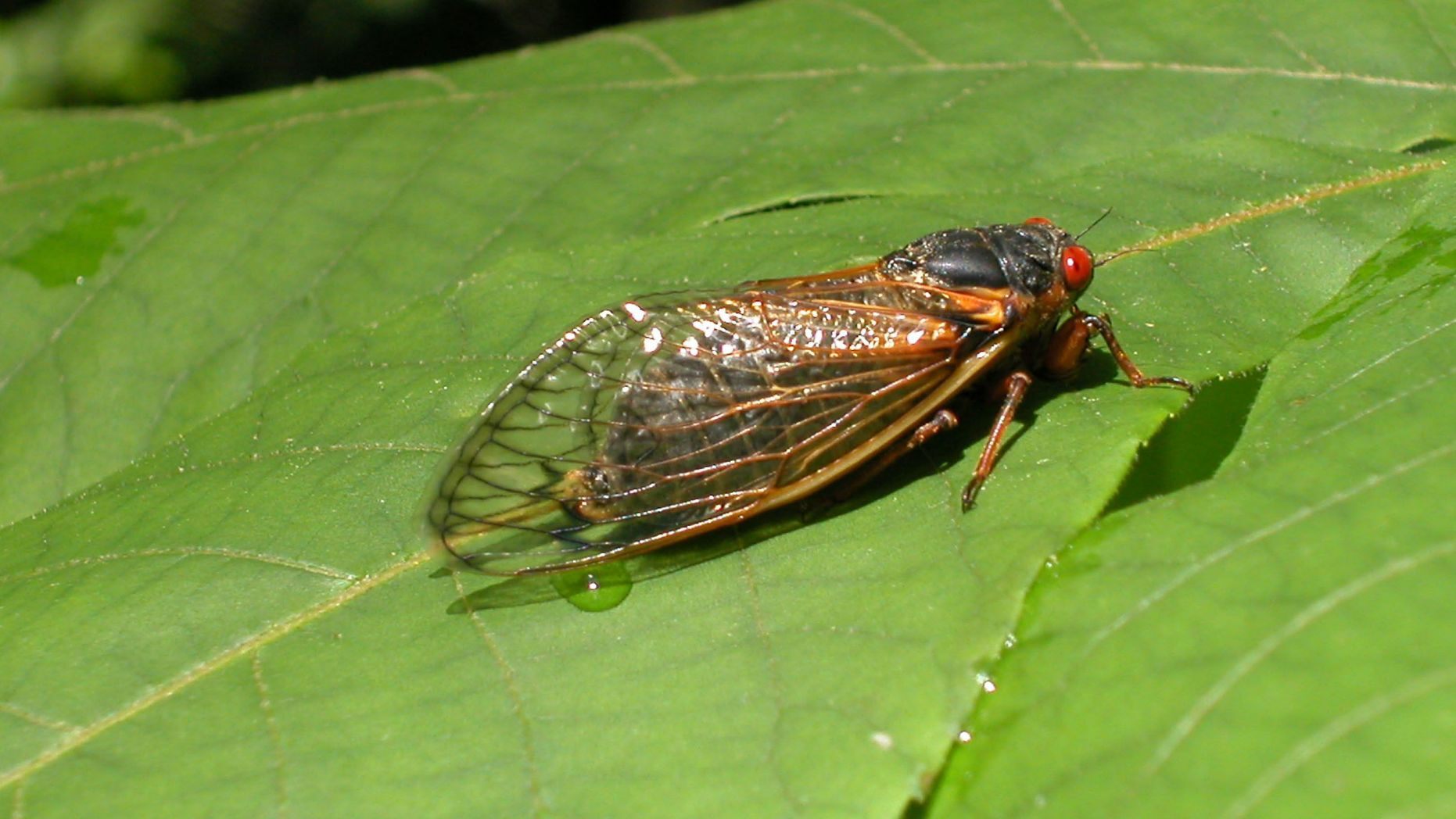Get set for the return of cicadas and their ‘alien-like wail’ after 17 years underground

After 17 years underground, vast armies of cicadas and their “alien-like wail” are set to emerge in Virginia, West Virginia and North Carolina.
Virginia Tech compares the cacophony caused by the insects to “a field of out-of-tune car radios,” noting that the cicadas will again be making their noisy presence felt. The cicadas are part of what is known as brood IX.
“This year, that alien-like wail of the insect world will be even more pronounced, as millions of cicadas from brood IX emerge after 17 years underground,” wrote Virginia Tech in a statement.
AFTER 17 YEARS UNDERGROUND, VAST ARMY OF CICADAS SET TO EMERGE
The National Institutes of Health notes that cicadas can make as much noise as a motorcycle. “Male cicadas use drum-like structures on their abdomen called tymbals to create a loud, high-pitched buzz to attract female companions, who respond with a quick flick of their wings together,” it explains on its website. “This mating call and response, which sounds to some like the whining of electrical wires rising and falling, can reach over 90 decibels.”
A newly emerged adult cicada from brood X suns itself on a leaf May 16, 2004 in Reston, Va.
A newly emerged adult cicada from brood X suns itself on a leaf May 16, 2004 in Reston, Va. (Photo by Richard Ellis/Getty Images)
Users on social media have already posted about their recent encounters with the noisy creatures.
Turn your volume up and you can easily hear the #cicadas in Pittyslanvia County,” tweeted @geo_brady, a Geographic Information Systems analyst in southern Virginia.
brady
@geo_brady
Turn your volume up and you can easily hear the #cicadas in Pittyslanvia County.
Embedded video
12
8:36 PM – May 22, 2020
Twitter Ads info and privacy
See brady’s other Tweets
“So many cicadas — all up in my marshmallow plant,” tweeted @gustin.
gustin
@gustin
So many cicadas — all up in my marshmallow plant
View image on Twitter
1
5:43 PM – May 26, 2020
Twitter Ads info and privacy
See gustin’s other Tweets
‘RODEO ANTS’ THAT HITCH A RIDE ON LARGER ANTS DISCOVERED IN TEXAS
“The scale of these emergence events is astounding, with as many as 1.5 million cicadas emerging per acre,” explained Virginia Tech in a statement. “Each periodical cicada brood covers a specific geographical region, with some areas overlapping.”
Adult cicadas from brood X dry their wings on leaves May 16, 2004 in Reston, Virginia. – file photo.
Adult cicadas from brood X dry their wings on leaves May 16, 2004 in Reston, Virginia. – file photo. (Photo by Richard Ellis/Getty Images)
The natural phenomenon will span southwest Virginia, parts of North Carolina, and West Virginia, according to the university. Experts warn that the cicadas’ egg-laying habits can pose a risk to orchards, vineyards and ornamental trees.
“Cicadas can occur in overwhelming numbers and growers in predicted areas of activity should be watchful,” said Virginia Tech professor Doug Pfeiffer in the statement.
DEADLY FUNGUS CREATES ‘ZOMBIE ANTS’ AND HIJACKS THEIR JAWS TO CAUSE SUICIDE
“Brood IX is interesting to researchers because it’s located very close to 5 other broods,” explains the Cicada Mania website.
Part of the region covered by brood IX, for example, overlaps with brood II, which emerged in 2013, according to Virginia Tech.
Other broods are also attracting interest. The Magic Cicada website reports that the 13-year-periodical cicada brood XIX, also known as the Great Southern Brood, is expected to emerge in 2024, but “significant numbers” appear to be emerging four years early.
HUGE LOCUST SWARMS HIT INDIA, EAST AFRICA AMID CORONAVIRUS PANDEMIC
Virginia Tech describes the timing of the 13- or 17-year brood cycles as one of the great mysteries of the insect world.
“Research and mathematical modeling suggest that the length of these brood cycles could be attributed to predatory avoidance,” it says in the statement. “When the cicadas emerge, the amount of biomass they provide could serve as a food source for potential predators to take advantage of. It is theorized that these cicadas have evolved to avoid synching up with predator cycles by having a 13- or 17-year prime number emergence interval.”
Monitoring brood IX, however, is being complicated by the coronavirus pandemic, according to the Cicada Mania website.
CLICK HERE TO GET THE FOX NEWS APP
“In a normal year, researchers would be able to drive the roads of the area and map the location of the brood so we can get data as to where the broods intersect, but because of the current situation in the U.S., most if not all researchers will be able to travel — so we need you to let us know where they’re at,” it said.



 Creators of mankind
Creators of mankind Description of “Tall white aliens”
Description of “Tall white aliens” Where they came from?
Where they came from? About hostile civilizations
About hostile civilizations The war for the Earth
The war for the Earth “Tall white aliens” about eternal life
“Tall white aliens” about eternal life Video: “Nordic aliens”
Video: “Nordic aliens” Aliens
Aliens Alien encounters
Alien encounters The aliens base
The aliens base UFO
UFO Technology UFO
Technology UFO Underground civilization
Underground civilization Ancient alien artifacts
Ancient alien artifacts Military and UFO
Military and UFO Mysteries and hypotheses
Mysteries and hypotheses Scientific facts
Scientific facts


















